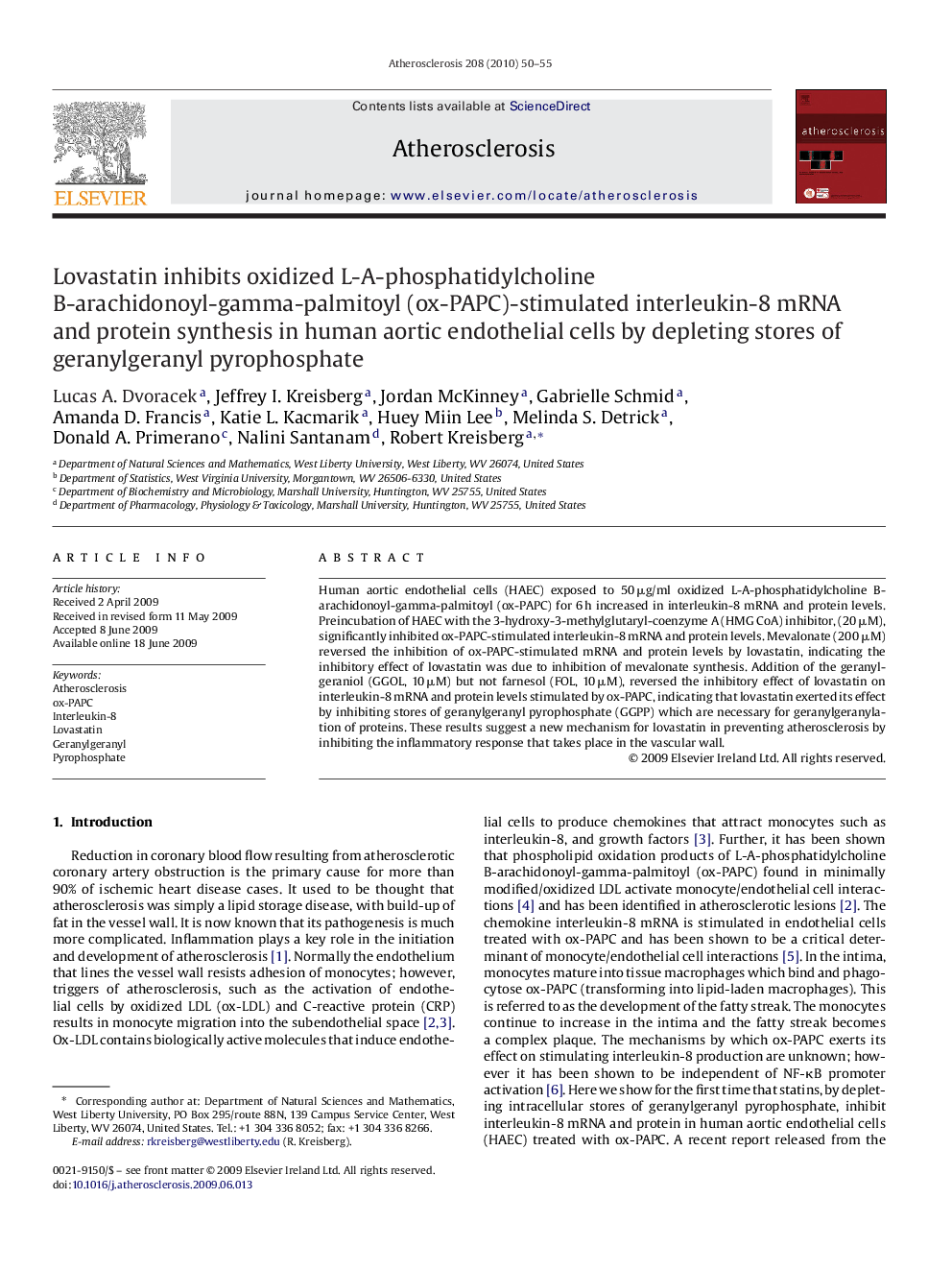| Article ID | Journal | Published Year | Pages | File Type |
|---|---|---|---|---|
| 2893660 | Atherosclerosis | 2010 | 6 Pages |
Human aortic endothelial cells (HAEC) exposed to 50 μg/ml oxidized L-A-phosphatidylcholine B-arachidonoyl-gamma-palmitoyl (ox-PAPC) for 6 h increased in interleukin-8 mRNA and protein levels. Preincubation of HAEC with the 3-hydroxy-3-methylglutaryl-coenzyme A (HMG CoA) inhibitor, (20 μM), significantly inhibited ox-PAPC-stimulated interleukin-8 mRNA and protein levels. Mevalonate (200 μM) reversed the inhibition of ox-PAPC-stimulated mRNA and protein levels by lovastatin, indicating the inhibitory effect of lovastatin was due to inhibition of mevalonate synthesis. Addition of the geranylgeraniol (GGOL, 10 μM) but not farnesol (FOL, 10 μM), reversed the inhibitory effect of lovastatin on interleukin-8 mRNA and protein levels stimulated by ox-PAPC, indicating that lovastatin exerted its effect by inhibiting stores of geranylgeranyl pyrophosphate (GGPP) which are necessary for geranylgeranylation of proteins. These results suggest a new mechanism for lovastatin in preventing atherosclerosis by inhibiting the inflammatory response that takes place in the vascular wall.
